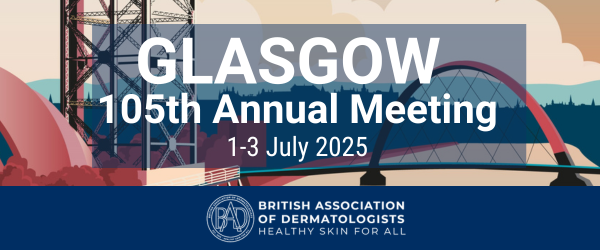Please click on the link button above to access the scientific programme.
You will be able to:
- View full session list or daily timeline
- Search by Session / Room / Day
- Search by presenter
- Click on sessions for further details
- View list of posters
- Press the PDF button to download a PDF of the session

Sir Chris Bryant will be presenting his Patient Journey in the plenary session on Wednesday afternoon.
(pictured middle with John Humphrys and BAD Academic V-P Prof Mike Ardern-Jones)

